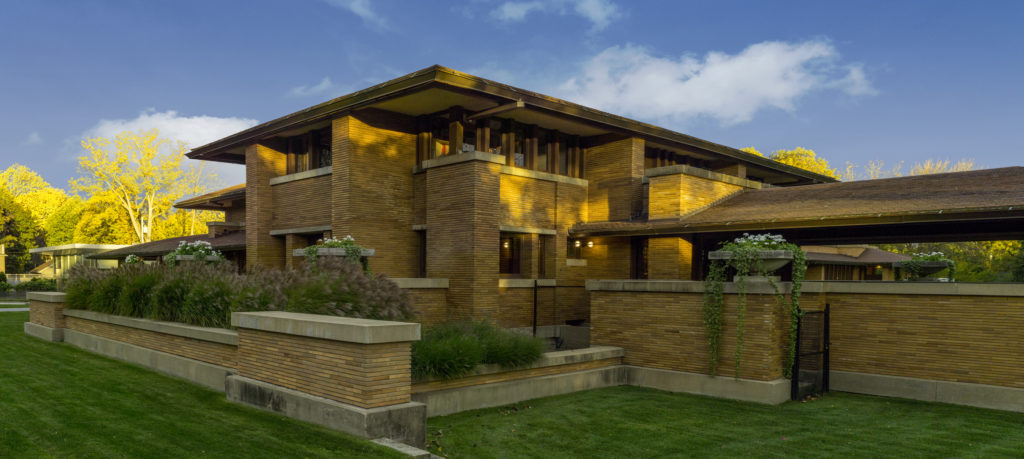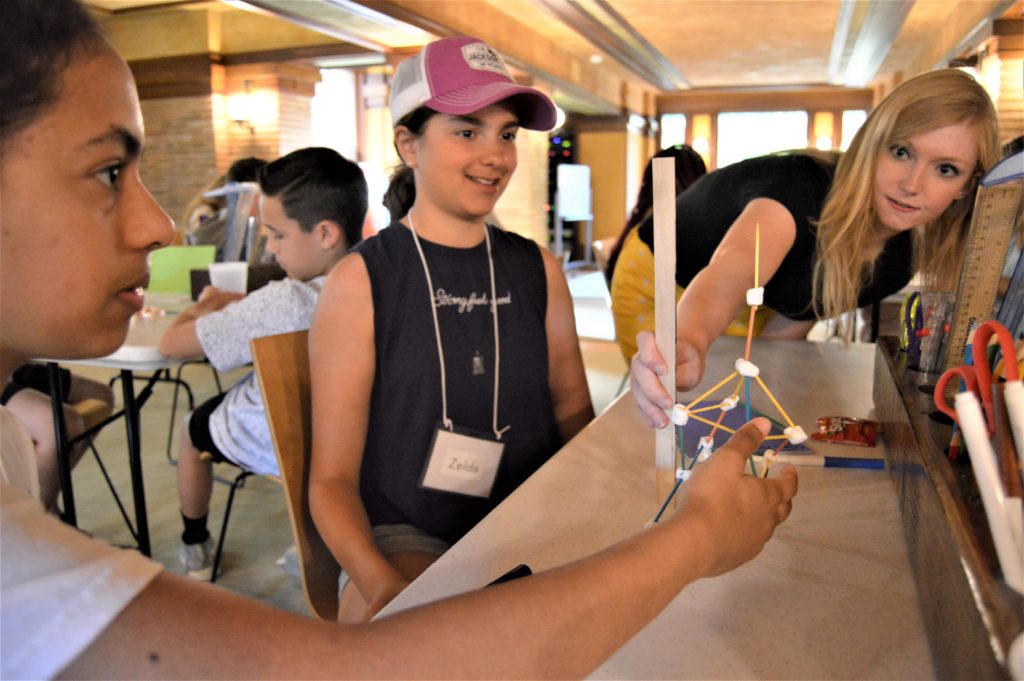Notes from the Field: Architecture Education in the Age of Mandates
Frank Lloyd Wright’s Martin House in Buffalo, NY is a Prairie Style house built in 1905 for the Martin family. The Martin House looks unlike the rest in the neighborhood; it is low and long, and embraces the American Prairie’s colors. Throughout the year, school groups and families visit for tours, programs, and community days. While on site, guests learn about what architecture means and what its possibilities are.

At the heart of our programs is the belief that innovation is necessary. The Martin House rests on a foundation of modernization: without Frank Lloyd Wright’s decision to move beyond conventional architectural design, both aesthetically and functionally, the House would not exist. Furthermore, as educators, we understand that the value of learning comes not from rote memorization but from critical thinking and dialogue, both of which spark new ideas. Without original goals, learning stagnates.
It is with this in mind that I reflect on the recent “Make Federal Buildings Beautiful Again” executive order proposed by the Trump Administration. This yet-to-be-approved order states that federal buildings should be designed in the classical style; it emphasizes that the brutalist and modern architecture found in capitals across the nation are aesthetically inferior to Greco-Roman style of architecture.
How should museum educators, particularly at architectural/design-based institutions, respond? At the Martin House, we take direction from Frank Lloyd Wright’s belief in breaking the boxes that previously encased traditional design. We teach students about how Wright helped foster a new American architecture that was grounded in modernization and technology. (Note that if Wright had not veered away from classical design, UNESCO would not have designated several of his buildings as World Heritage sites.)

That classical architecture is more beautiful than the myriad styles of structural design does not align with what students should walk away understanding about the Martin House or architecture in general. The inherent issue is this: if students are told that classical architecture is beautiful and that every architectural innovation that departs from this is not, they will not understand the value of breaking the boxes of their own thinking or challenging belief structures. We teach students the importance of structural integrity, but it is more than that: We teach them that integrity stems from being different, unique, and proud to be innovative.
Taylor Jeromos is the Programs Coordinator at Frank Lloyd Wright’s Martin House in Buffalo, NY and serves on the Board of Directors for the Museum Education Roundtable.

